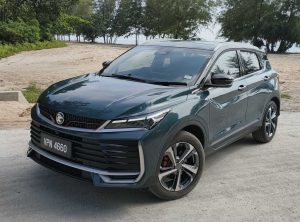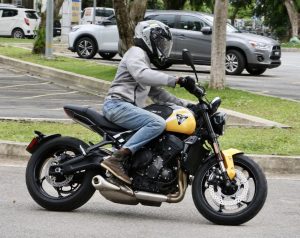SOP to put out electric vehicle fires to be enhanced periodically
By THE STAR | 15 October 2023
PETALING JAYA: Standard operating procedures (SOP) involving extinguishing electric vehicle fires will be studied and enhanced periodically.
Although cooling has been the only viable method to extinguish flames involving batteries on electric vehicles, certain steps have been identified to reduce the spread of fire at electric vehicle charging bays (EVCB).
Fire and Rescue Department director-general Datuk Seri Abdul Wahab Mat Yasin told The Star new research and development of current technology would also be taken into consideration in tweaking the SOP from time to time.
"Putting out fires involving EVCBs and electric vehicles is very challenging, which is why a director-general's standing order was issued in 2020 on the SOP for operations involving electric vehicle fires.
"We have also conducted literature reviews on previous studies involving the suitable and effective extinguishing media to put out such fires," he said, adding that current research shows that there is no extinguishing media that is fully effective to put out fires involving lithium-ion batteries.
READ MORE: Electric cars catch fire less often than fossil-fuelled ones, study shows
Abdul Wahad said currently all operations use water as a cooling method, and this also involves a considerable amount of water compared to putting out fires on conventional vehicles.
Checks revealed that early this year, the Sacramento Metropolitan Fire District in the United States used more than 22,000 litres of water to extinguish a fire on a Tesla car.
According to its official X (formerly known as Twitter) page, the car was travelling on the highway when it caught fire.
"The vehicle battery compartment spontaneously caught fire while it was travelling freeway speeds on EB Hwy 50. The fire was extinguished with about 6,000 gallons of water as the battery cells continued to combust. Thankfully, no injuries were reported," it tweeted on Jan 29.
"We have, however, identified certain elements and additions to buildings in order to stop the spread of such fires.
"These measures include building parapet walls, isolating EVCBs from normal parking bays, having vehicle fire blankets, having natural and mechanical ventilation, as well as having fire heat detectors or multi-sensor fire detection."
Tags
Autos News
Reviews

First drive with the 2025 Hyundai Tuscon and Santa Fe: Seoul...

5.8
Kymco AK550 Premium: Smart easy rider

BYD Seal 6 Premium: Sweet deal, generous kit, sensible prici...

8.7
Mazda CX-80 2.5G PHEV AWD High Plus: Upmarket upgrade

Proton X50 Flagship: Tuned for success

6.6
Triumph Trident 660: Beautifully balanced package

8.4
Mercedes-AMG GLA 35 4Matic: Never a dull moment

Lamborghini Urus SE: Ultimate control
Videos

Free & Easy Media Test: Latest Proton X50 Flagship to Kuanta...

Zeekr Space Sunway City Video

Honda Civic Type R Ultimate Edition: Last 40 Units for Europ...
